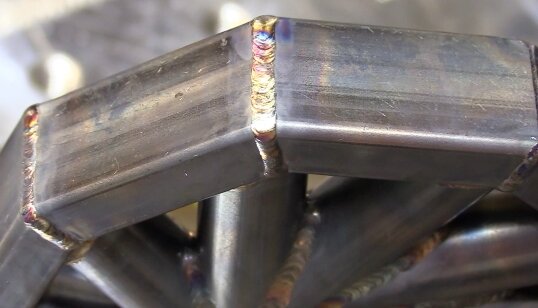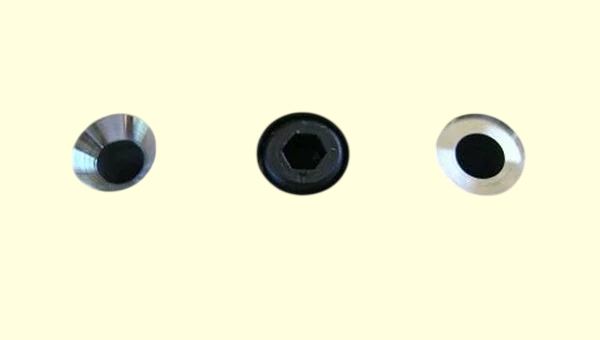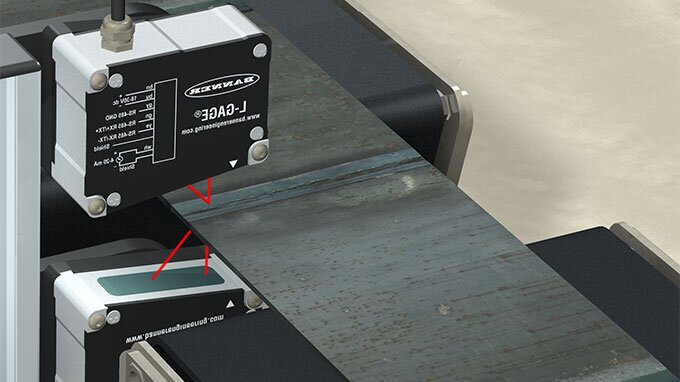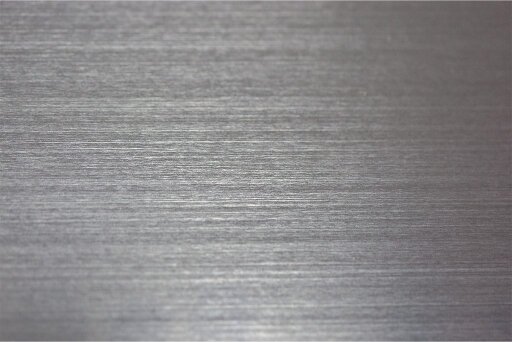Tieflochbohren ist ein spezielles Bearbeitungsverfahren, bei dem Löcher mit einem großen Verhältnis von Tiefe zu Durchmesser entstehen. Ingenieure und Hersteller stehen bei der Arbeit mit tiefen Löchern oft vor Herausforderungen, wie z. B. die Einhaltung der Präzision und das Wärmemanagement. Dieser Leitfaden soll Ihnen helfen, die Grundlagen und Anwendungen des Tieflochbohrens zu verstehen.
Ich möchte Ihnen die wichtigsten Details über Tieflochbohrmethoden, Werkzeuge und bewährte Verfahren erläutern. Dieses Wissen wird Ihnen helfen, den richtigen Ansatz für Ihre Produktionsanforderungen zu wählen.
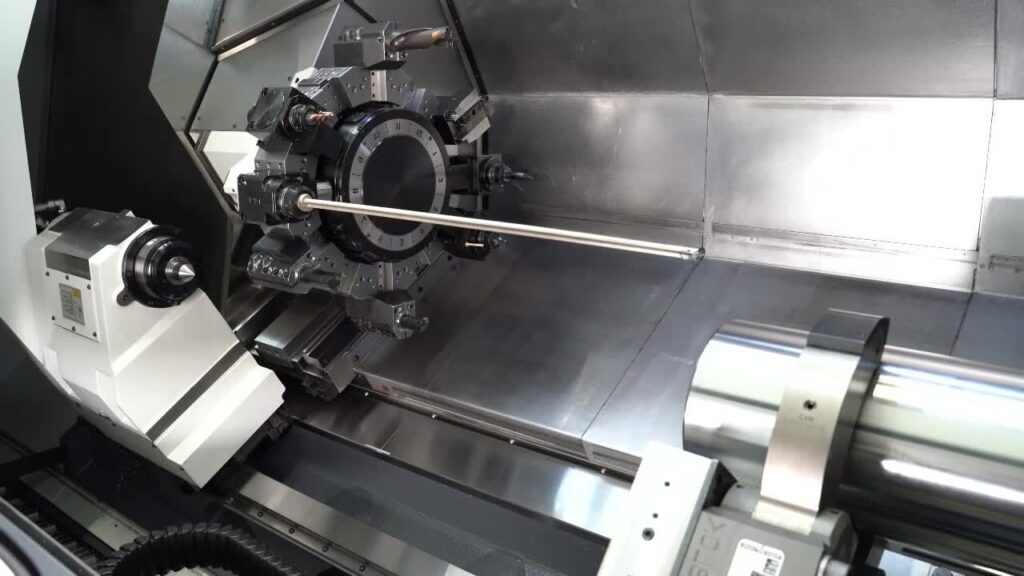
Was ist Tieflochbohren?
Das Tieflochbohren ist ein Verfahren zur Herstellung von Löchern, die viel tiefer sind als ihr Durchmesser. In der Regel ist die Tiefe des Lochs mindestens zehnmal so groß wie der Durchmesser. Dieses Verfahren eignet sich für verschiedene Materialien, von weichem Aluminium bis hin zu starken Superlegierungen, und ist daher für viele Branchen geeignet.
Die Technik entstand ursprünglich aus der Notwendigkeit, hochpräzise Waffenrohre zu bohren. In diesen Fällen konnte das Verhältnis von Tiefe zu Durchmesser bis zu 20:1 betragen. Heute wird das Tieflochbohren in der Luft- und Raumfahrt, in der Automobilindustrie und im Formenbau eingesetzt, um genaue, tiefe Löcher für Teile zu schaffen, die Stärke und Präzision erfordern.
Arten von Tieflochbohrtechniken
Beim Tieflochbohren werden mehrere Verfahren eingesetzt. Jede Methode hat ihre Vorteile und ist für unterschiedliche Aufgaben geeignet. Im Folgenden werden einige der gängigsten Verfahren vorgestellt.
Kanonenbohren
Das Tieflochbohren ist eine beliebte Methode zur Herstellung tiefer, gerader Löcher. Dabei wird ein einzelner Bohrer verwendet, der sich schnell dreht, während in der Mitte Kühlmittel fließt, das die Späne entfernt und den Bohrer kühl hält. Das Tieflochbohren ist bekannt für seine Genauigkeit und die glatte Oberfläche.
BTA-Bohrung
Beim BTA-Bohren wird ein Doppelrohrsystem verwendet. Das Kühlmittel fließt durch das innere Rohr, während die Späne durch das äußere Rohr abgeführt werden. Diese Methode eignet sich hervorragend zum Bohren größerer und tieferer Löcher mit hoher Präzision.
Ejektor-Bohrung
Das Ejektorbohren funktioniert ähnlich wie das BTA-Bohren, allerdings mit einem gewissen Unterschied. Es verwendet einen internen Auswerfer, um die Späne aus dem Loch zu drücken. Diese Methode eignet sich zum Bohren tiefer Löcher in harte Materialien.
Wendeschneidplattenbohren
Beim Wendeschneidplattenbohren werden austauschbare Schneidplatten auf dem Bohrer verwendet. Wenn die Schneidplatten abgenutzt sind, können sie ausgetauscht werden. Dadurch wird das Verfahren für das Bohren hoher Stückzahlen kostengünstig. Es ist ideal für das Bohren tiefer Löcher in verschiedenen Materialien.
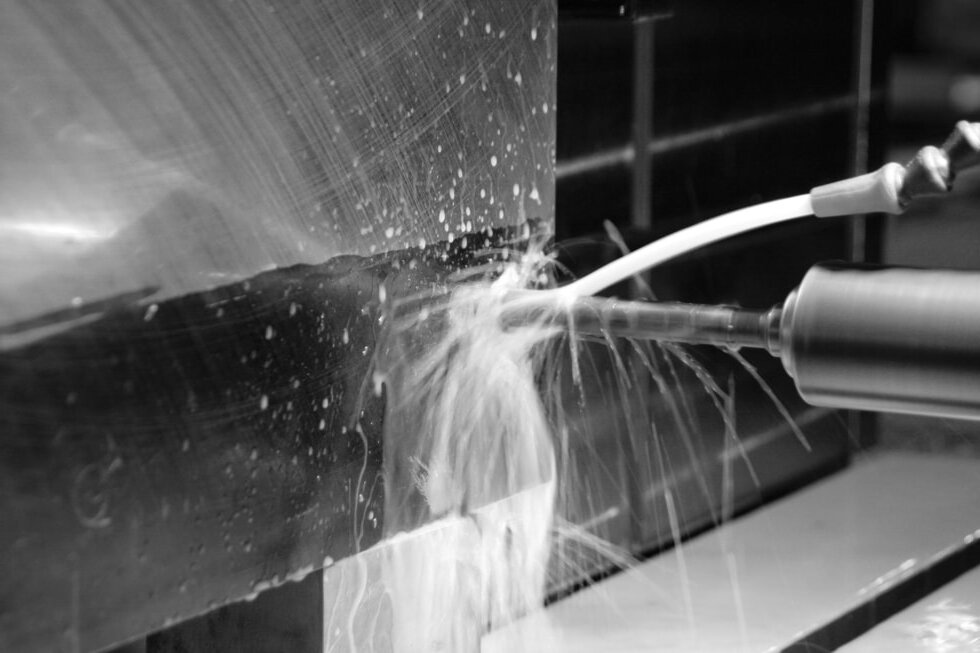
Vorteile des Tieflochbohrens
Das Tieflochbohren bietet mehrere bedeutende Vorteile, die es zu einer bevorzugten Methode in vielen Branchen machen. Hier sind einige der wichtigsten Vorteile dieser Technik.
Hohe Präzision und Toleranz
Das Tieflochbohren ist für seine hohe Präzision bekannt. Es kann gerade, tiefe Löcher mit engen Toleranzen erzeugen. Es stellt sicher, dass die Löcher strengen Spezifikationen entsprechen, wodurch das Fehlerrisiko verringert wird.
Erhöhte Materialabtragsrate
Ein wesentlicher Vorteil des Tieflochbohrens ist der schnelle Materialabtrag. Diese Methode ermöglicht im Vergleich zum herkömmlichen Bohren ein schnelleres Schneiden. Mit den richtigen Werkzeugen und dem richtigen Kühlmittel wird das Material effizient abgetragen.
Fähigkeit zum Bohren von Langlöchern
Das Tieflochbohren ist für die Herstellung langer, schmaler Löcher konzipiert. Es kann Löcher bohren, die um ein Vielfaches tiefer sind als ihr Durchmesser, was mit herkömmlichen Bohrverfahren schwierig ist. Diese Technik sorgt dafür, dass die Löcher auch in schwierigen Materialien einen gleichmäßigen Durchmesser behalten.
Branchen, die Tieflochbohren verwenden
Tieflochbohren wird in vielen Branchen eingesetzt, die Präzision und hohe Leistung erfordern. Im Folgenden sind einige Schlüsselsektoren aufgeführt, die auf diese Technik angewiesen sind.
Luft- und Raumfahrt und Verteidigung
In der Luft- und Raumfahrt sowie im Verteidigungsbereich werden durch Tieflochbohren Teile wie Kraftstoffeinspritzdüsen, Motorkomponenten und Geschützrohre hergestellt. Dadurch wird sichergestellt, dass die Teile wie gewünscht funktionieren und den Sicherheitsstandards entsprechen.
Automobilindustrie
In der Automobilindustrie wird das Tieflochbohren für Teile wie Motorkomponenten, Kraftstoffsysteme und Getriebe eingesetzt. Mit dieser Methode lassen sich präzise Löcher in Teile bohren, die hohem Druck und hoher Belastung ausgesetzt sind.
Öl und Gas
In der Öl- und Gasindustrie ist das Tieflochbohren von entscheidender Bedeutung für das Bohren tiefer Bohrlöcher und die Arbeit mit starren Materialien. Es wird zum Bohren von Ölquellen und zum Herstellen von Löchern für Ventile und Pumpen verwendet.
Herstellung medizinischer Geräte
Das Tieflochbohren ist auch in der medizinischen Geräteindustrie wichtig. Sie wird zur Herstellung von Komponenten wie Spritzen, Implantaten und anderen Geräten verwendet, die oft tiefe, präzise Löcher benötigen, um richtig zu funktionieren.
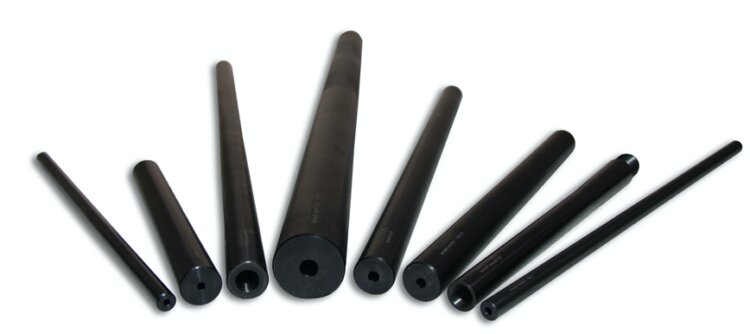
Überlegungen zu Werkzeugen und Ausrüstung für Tieflochbohrungen
Die Auswahl der richtigen Werkzeuge und Geräte ist entscheidend für Präzision und Effizienz beim Tieflochbohren. Hier sind einige Schlüsselfaktoren, die es zu beachten gilt.
Auswahl des richtigen Bohrers
Der Bohrer sollte fest und für das zu bohrende Material geeignet sein. Faktoren wie die Tiefe des Lochs, der Durchmesser und die Art des Materials beeinflussen die Wahl des Bohrers. Für tiefe, enge Löcher wird oft ein spezieller Bohrer benötigt, z. B. ein Tieflochbohrer oder ein BTA-Bohrer.
Die Bedeutung von Kühlmitteln
Kühlmittel spielen beim Tieflochbohren eine wichtige Rolle. Sie tragen dazu bei, den Bohrer kühl zu halten, damit er nicht überhitzt und zu schnell verschleißt. Kühlmittel spülen auch die Späne aus dem Loch, was zur Aufrechterhaltung der Präzision beiträgt.
Verwenden Sie hochwertige Ausrüstung
Hochwertige Ausrüstung ist der Schlüssel zu den besten Ergebnissen beim Tiefbohren. Eine hochwertige Ausrüstung gewährleistet, dass der Bohrprozess effizient ist, die Lebensdauer der Werkzeuge verlängert wird und das Endprodukt den erforderlichen Standards entspricht.
Gemeinsame Herausforderungen beim Tieflochbohren
Tiefbohrungen bieten viele Vorteile, haben aber auch ihre Tücken. Hier sind einige häufige Probleme, die bei diesem Verfahren auftreten können.
Werkzeugverschleiß und -versagen
Der Werkzeugverschleiß ist beim Tieflochbohren eine große Herausforderung. Beim Bohren durch zähe Materialien kann der Bohrer schnell verschleißen, und die hohen Geschwindigkeiten und die Hitze des Prozesses verschlimmern dies noch. Um Werkzeugausfälle zu vermeiden, ist die Verwendung hochwertiger Bohrer und eine angemessene Kühlung unerlässlich.
Beibehaltung der Präzision über große Entfernungen
Je tiefer das Loch wird, desto schwieriger wird es, die Präzision beizubehalten. Je länger das Loch ist, desto schwieriger ist es, den Bohrer auszurichten. Es ist wichtig, fortschrittliche Bohrausrüstung zu verwenden und konstante Bedingungen aufrechtzuerhalten, um das Loch gerade und konsistent zu halten.
Sicherstellung der Stabilität des Werkstücks
Eine weitere Herausforderung besteht darin, das Werkstück stabil zu halten. Wenn sich das Werkstück während des Bohrens verschiebt, kann das Loch ungenau sein. Um dies zu vermeiden, müssen Sie sicherstellen, dass das Werkstück mit den richtigen Klemmen sicher platziert ist und Einspannung.
Tieflochbohren im Vergleich zu herkömmlichen Bohrverfahren
Tieflochbohren und traditionelles Bohren Methoden weisen entscheidende Unterschiede auf. Vergleichen wir Geschwindigkeit, Präzision und Kosten und sehen wir, wann man sich für das Tieflochbohren gegenüber anderen Methoden entscheiden sollte.
Vergleich von Geschwindigkeit, Präzision und Kosten
Geschwindigkeit: Das Tieflochbohren kann beim Bohren tiefer, enger Löcher schneller sein als herkömmliche Methoden. Das Verfahren ist auf einen effizienten Materialabtrag ausgelegt. Bei flachen Löchern oder kleineren Projekten kann das herkömmliche Bohren jedoch schneller sein.
Präzision: Das Tieflochbohren ist für seine Genauigkeit bekannt. Es kann tiefe, gerade Löcher mit engen Toleranzen erzeugen. Herkömmliche Methoden mögen für flache Löcher gut funktionieren, haben aber Schwierigkeiten, die Genauigkeit über lange Strecken aufrechtzuerhalten.
Kosten: Tieflochbohrungen sind in der Regel teurer. Sie erfordern spezielle Werkzeuge und Ausrüstungen. Der Preis ist es jedoch wert, wenn hohe Präzision erforderlich ist. Herkömmliche Bohrverfahren sind in der Regel billiger, bieten aber möglicherweise nicht die gleiche Genauigkeit für tiefe Löcher.
Wann sollte man Tiefbohrungen anderen Methoden vorziehen?
Das Tieflochbohren ist die beste Wahl, wenn es darum geht, tiefe, schmale Löcher mit hoher Präzision herzustellen. Sie ist ideal für Branchen wie Luft- und Raumfahrt, Automobilbau und medizinische Geräte. Beim Tieflochbohren werden die besten Ergebnisse erzielt, wenn das Loch viel tiefer ist als sein Durchmesser.
Schlussfolgerung
Tieflochbohren ist eine spezielle Technik, die Präzision und Effizienz bei der Herstellung langer, schmaler Löcher in verschiedenen Materialien bietet. Sie ist besonders nützlich in Branchen wie der Luft- und Raumfahrt, der Automobilindustrie, der Öl- und Gasindustrie und der Herstellung medizinischer Geräte. Wenn Sie die verschiedenen Arten von Tieflochbohrverfahren kennen, können Sie die richtige Technik für Ihre Bedürfnisse auswählen.
Wenn Sie auf der Suche nach Präzisionslösungen für Tieflochbohrungen sind oder Beratung bei der Auswahl der richtigen Technik für Ihr Projekt benötigen, Sie können uns gerne kontaktieren. Unser erfahrenes Team hilft Ihnen, die beste Wahl für Ihre Produktionsanforderungen zu treffen.
FAQs
Welche maximale Tiefe kann beim Tiefbohren erreicht werden?
Die maximale Tiefe hängt vom Material und dem Bohrverfahren ab. Im Allgemeinen kann beim Tieflochbohren eine Tiefe von bis zum 300-fachen des Lochdurchmessers erreicht werden, aber dies variiert je nach Technik und Maschinenleistung.
Welche Art von Bohrer wird für tiefe Löcher verwendet?
Pistolenbohrer, BTA-Bohrer und Auswerferbohrer sind die gängigsten Tieflochbohrer. Sie sind für hohe Präzision und effizienten Materialabtrag in tiefen, engen Löchern ausgelegt.
Was ist das Standardverhältnis für Tieflochbohrungen?
Das Standardverhältnis zwischen Tiefe und Durchmesser beim Tieflochbohren beträgt in der Regel 10:1 oder mehr. Bei einigen Spezialanwendungen kann dieses Verhältnis 20:1 oder mehr betragen.
Hey, ich bin Kevin Lee

In den letzten 10 Jahren bin ich in verschiedene Formen der Blechbearbeitung eingetaucht und teile hier coole Erkenntnisse aus meinen Erfahrungen in verschiedenen Werkstätten.
Kontakt aufnehmen

Kevin Lee
Ich verfüge über mehr als zehn Jahre Berufserfahrung in der Blechverarbeitung und bin auf Laserschneiden, Biegen, Schweißen und Oberflächenbehandlungstechniken spezialisiert. Als Technischer Direktor bei Shengen bin ich bestrebt, komplexe Fertigungsherausforderungen zu lösen und Innovation und Qualität in jedem Projekt voranzutreiben.

